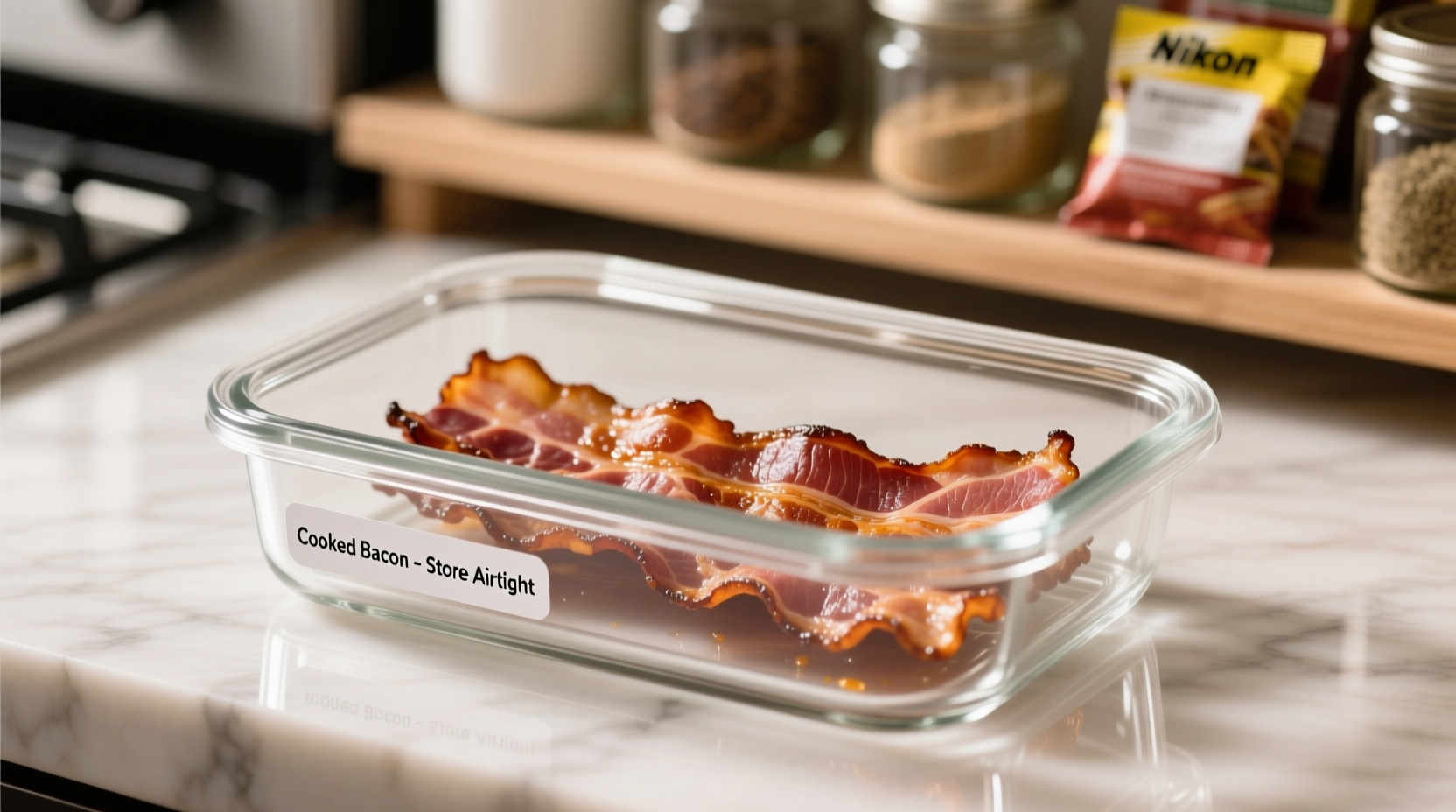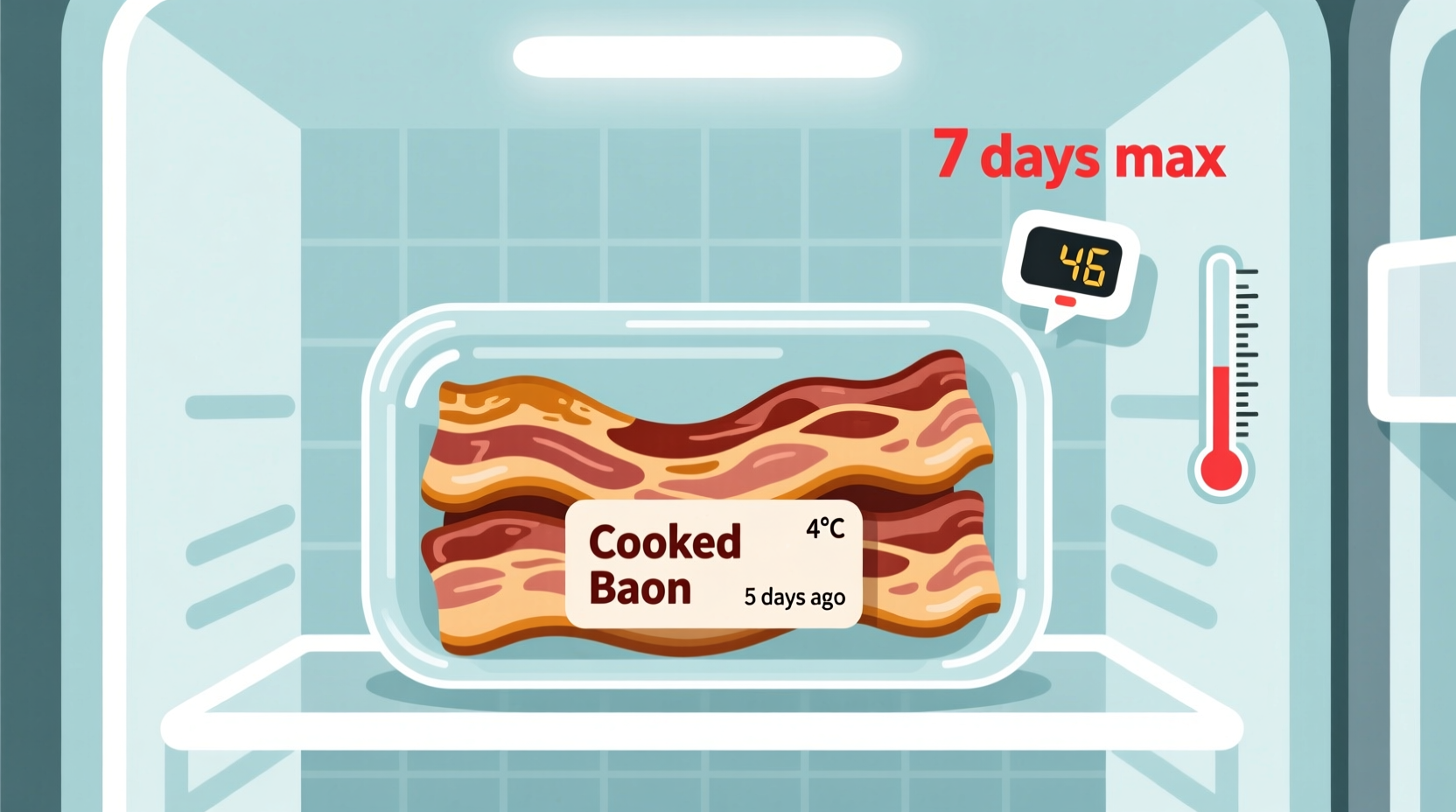Why This Timeline Matters for Your Kitchen Safety
Understanding exactly how long is cooked bacon good for in the refrigerator prevents both food waste and potential foodborne illness. Many home cooks either discard perfectly good leftovers too soon or risk eating spoiled bacon because they're unsure of proper storage timelines.
Maximizing Your Cooked Bacon's Freshness
Following these storage steps ensures you get the full 3-4 day window without compromising safety:
Immediate Cooling Process
Don't leave cooked bacon sitting at room temperature. Transfer it to storage containers within 2 hours of cooking (1 hour if your kitchen exceeds 90°F/32°C). Rapid cooling prevents bacterial growth during the "danger zone" temperature range (40°F-140°F).
Proper Storage Containers
Use one of these approved methods for optimal results:
- Air-tight glass or BPA-free plastic containers with secure lids
- Heavy-duty aluminum foil with multiple tight folds
- Freezer bags with air completely squeezed out
- Vacuum-sealed packaging (extends freshness toward the 4-day maximum)
| Storage Method | Refrigerator Timeline | Freezer Timeline |
|---|---|---|
| Standard container | 3 days | 1 month |
| Vacuum-sealed | 4 days | 3 months |
| Aluminum foil wrap | 2-3 days | 1 month |
Recognizing When Cooked Bacon Has Spoiled
Even within the 3-4 day window, improper storage conditions can cause premature spoilage. Check for these definitive signs before consuming:
Visual Indicators
Look for significant color changes beyond normal darkening. Grayish-green spots or visible mold growth (fuzzy white, green, or black patches) mean immediate disposal is necessary. The USDA Food Safety and Inspection Service confirms that "mold can produce harmful mycotoxins that may not be visible to the naked eye."
Sensory Warning Signs
Your senses provide crucial safety information:
- Smell test: Sour, fishy, or unpleasantly rancid odor (distinct from normal smoky bacon aroma)
- Texture change: Slimy film or sticky surface when touched
- Taste warning: Never taste questionable bacon - trust visual and smell indicators first

Extending Your Cooked Bacon's Usable Life
When you need more time than the refrigerator provides, freezing offers a safe solution:
Freezing Best Practices
For optimal frozen storage of cooked bacon:
- Cool completely before freezing to prevent ice crystals
- Separate into meal-sized portions for convenient thawing
- Use vacuum sealing for maximum 3-month freezer life
- Label containers with cooking date for tracking
Safe Thawing Methods
Never thaw frozen cooked bacon at room temperature. Use one of these USDA-approved methods:
- Refrigerator thawing (24 hours for best results)
- Cold water bath (change water every 30 minutes)
- Direct cooking from frozen (works well for crumbled bacon)
Common Storage Mistakes That Shorten Shelf Life
Avoid these frequent errors that compromise your cooked bacon's safety:
- Storing while still warm (creates condensation inside containers)
- Using thin plastic bags that develop micro-tears
- Placing near refrigerator door where temperature fluctuates
- Reusing containers that previously held strong-smelling foods
Special Considerations for Different Bacon Types
While standard guidelines apply to most cooked bacon, these variations require attention:
- Turkey bacon: Slightly shorter 2-3 day refrigerator life due to leaner composition
- Sugar-cured varieties: May develop stickiness faster but remains safe within standard timeframe
- Pre-cooked packaged bacon: Follow manufacturer's "use by" date rather than general guidelines











 浙公网安备
33010002000092号
浙公网安备
33010002000092号 浙B2-20120091-4
浙B2-20120091-4